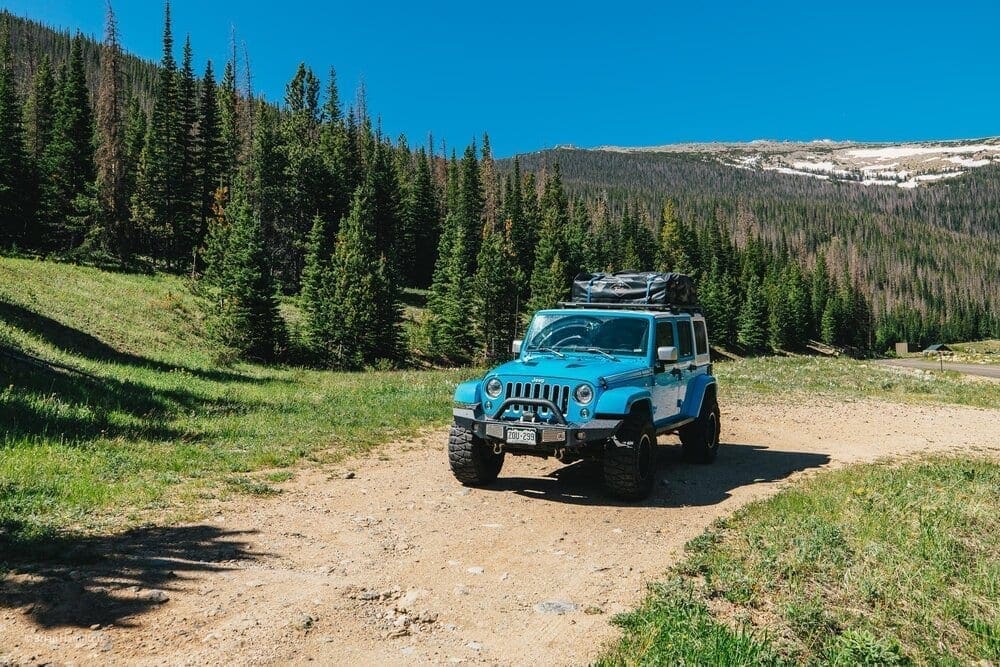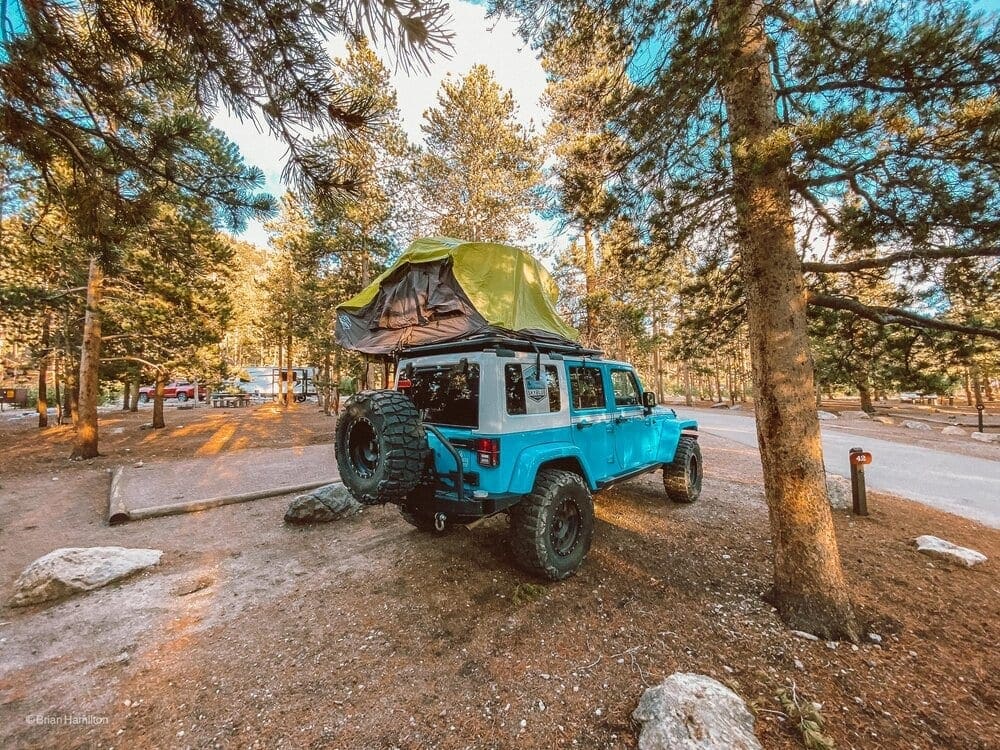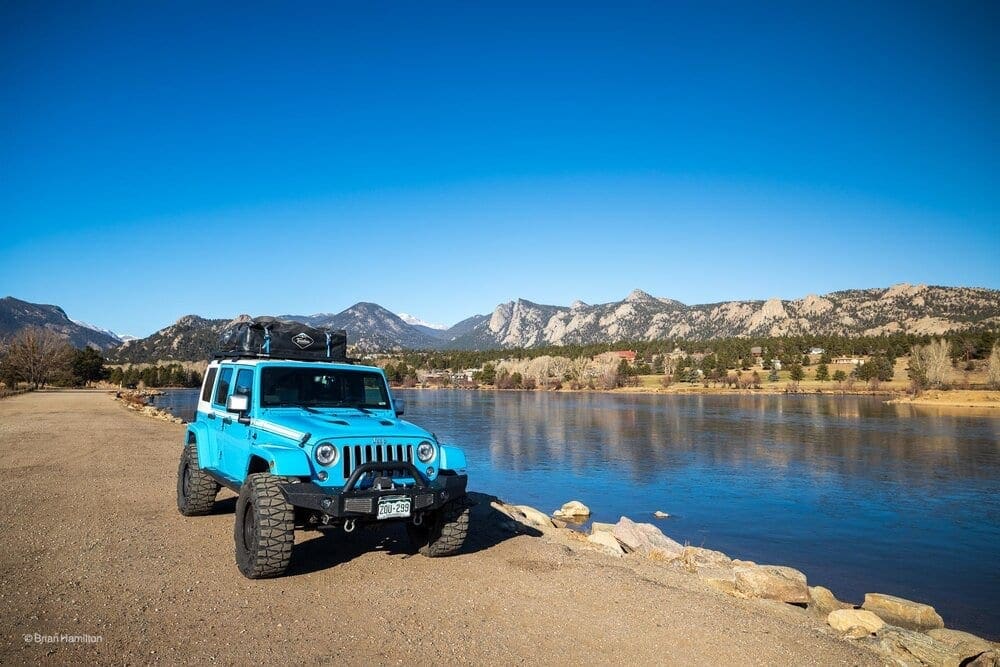|
Getting your Trinity Audio player ready...
|

Skyblue Overland enjoying an overland adventure in Rocky Mountain National Park, Colorado.
Have you considered overlanding but were put off by the presumed need for a specialized rig and associated gear?
Let me be clear…you can enjoy overlanding in any vehicle that gets you there and back home safely, with minimal breakdowns.
Beyond those basic parameters, feel free to do it your way, on your budget, and with your preferred level of risk and challenge. That’s a massive range but remember that overlanding is intended to be fun. That’s why we do it!
My personal reasons are my interests in endurance adventures, exploring new places, different cultures, and living an adventurous life. But yours may be driving over obstacles on challenging roads, trail running, hiking, mountain biking, backpacking, camping, stargazing, or anything else that gets you out of the house. All you need is the desire to get outside and explore the backcountry. The biggest thing is a love of adventure and enough gear to sustain yourself during your journey.
Essential Gear for Overlanding
You might expect a list of required overlanding gear to start with a vehicle lift kit and massive chunky treads, but that’s not so. To be clear, anyone can enjoy overlanding without a pro-level kit or rig, but I want to emphasize a few items that require your best effort:
-
Fire extinguisher
-
Recovery equipment, including a tire repair kit
-
Hand tools
-
Warmth
-
Food and water
These are the top priorities for every trip, no exceptions, especially if you’re going out alone, which I don’t recommend. Get out with friends and learn and help each other. It’s more fun and safer!
Let’s go over the essentials in more detail…
Your first-aid kit should be extensive, and you must know how to use it. Since you never know what can happen when you start an adventure, expect the best but prepare for the worst (within reason). Taking a full EMT kit may be a bit over the top, but you should be able to handle run-of-the-mill cuts, bruises, and sprains. In an upcoming post, I’ll go into much more detail about first-aid kits.
Fire extinguishers are another no-brainer. I like to have one certified unit and a few disposable spray cans. Keep track of the dates on all these units and replace or recertify as necessary.
Recovery tools include a tow strap, which is useful if you’re with another vehicle. You can also use a tow strap with a winch or come along and get yourself out of some surprising situations. Some overlanders consider vehicle recovery to be the most fun activity of all!
More recovery tools include a shovel or two, which are also super useful at camp. An off-road jack, often called a hi-lift jack, is versatile and nearly unbreakable, much better than any factory jack. And traction plates are a must-have.
Flat tires will happen, so be ready. You need a good spare tire, preferably not the near-junk tire you kept when you last purchased new tires for the rig. Products like Fix-a-Flat are a sealer and inflator in a can and are the easiest way to, well, fix a flat. You’ll want a patch kit, too, and using that kit requires tire irons to get the tire off the rim and back on. Not a big deal if you have the tools, but impossible without them.
While not mandatory, a compressor is really nice to have, especially if you air down the tire pressure for greater traction off-road. New models are small, powerful, and tough, and you can inflate your floaty water toys in a moment! If you decide to go overlanding frequently, you’ll definitely want a compressor.
You’ll also need hand tools. Wrenches, pliers, locking pliers, a socket set, a ball-peen hammer, and an electrical tester should be in the kit. And always have electrical tape, white lithium grease, penetrating oil, engine oil, duct tape, baling wire, and Super Glue. I like the gel because it’s not so runny.
For the last of the essentials, it’s simple. You must have warm clothing, sleeping bags, and blankets to prevent hypothermia. And it goes without saying that food and water are essential. But always have more water than you think you need. Even if you know for a fact that you’ll have access to water and you have a water filter or two, take a few gallons anyway because you never know.
Nice-to-Have Overlanding Gear
Now let’s look at some helpful but optional additions. Two-way radios are slick for communicating between team members, and they are relatively inexpensive. A satellite phone is costly, but when you reach the point of challenging, multi-day excursions, you’ll decide this item is essential. Better to have it and never need it than vice versa.
Route navigation is another facet of overlanding where you can pick up the latest technology or go old school. Humans have been navigating skillfully without GPS for millennia, and you can, too. Excellent maps exist for nearly any place you can drive to, and map-reading skills are invaluable.

Skyblue Overland’s Roof Top Tent open at Rocky Mountain National Park, Colorado.
On the flip side, an up-to-date GPS unit just rocks. They’re so tough and useful that I can’t imagine anyone buying a unit and not using it extensively. Either way, I strongly suggest that at least two members of your gang know the planned route thoroughly without relying completely on GPS. This is not the time to wing it.
Other gear is more about personal choice. Much or most of your existing camping kit will work fine for your overlanding adventures. Camping stoves, sleeping pads, and tents are designed to be versatile, so don’t be too obsessed with perfection. Get out there and discover what you want in your kit.
Although it’s a luxury, I think a roof-top tent just kicks ass. Park your rig as level as possible, flip the tent up/open, make a couple of adjustments, and you’re ready to rest, chill, or whatever. You’ll sleep off the ground, away from bugs, snakes, and other critters, and you’ll be more comfortable in any weather.
Unlike backpacking, bikepacking, horsepacking, or other animal-powered adventures, weight isn’t an issue with overlanding. If you have the room, don’t skimp on comforts like camp furniture, a solar generator, a portable shower—even a portable toilet and shelter. Make your 4×4 your home away from home. Having all this gear also makes it substantially more comfortable to stay out there longer.
Will My Rig Work?
Now for the overlanding rig…which vehicles are suitable? Let’s just say “many,” depending on the route and challenges you choose. You just need a capable vehicle and the desire to get into the backcountry to enjoy the journey. You can take any vehicle that is dirt-road/off-road capable, including a mountain bike, motorcycle, SUV, truck, or car. It doesn’t have to be about the rig!
If you currently drive a vehicle that works for you on the trail, chances are it will make a passable overlanding rig with a few modifications. Your preparation and skill are your secret weapons anyway. Without skill and good judgment, you can get even the best-built rig stuck or even upside down!
One observation about the rig. Controlling the rig means having the best tires you can get and making sure that the brakes are in good shape. Loss of vehicle control leads to bad—dangerous, expensive, avoidable—situations.
My Approach to Overlanding

Skyblue Overland on an overland adventure near Estes Park, Colorado.
To me, overlanding is the adventure of going on long journeys to explore parts unknown. From the Alaskan wilderness to the Arctic, driving to the tip of Baja California, or an overlanding expedition in Africa, I’ll go for it!
My overlanding adventures also go beyond exploration on long journeys. I like to combine overlanding with my favorite endurance adventures, such as mountain biking, hiking/backpacking, and trail running for a complete off-the-beaten-path adventure. You can go overlanding for just a weekend to a few months or for more than a year. Just get out there!
I enjoy skipping out on work on a Friday afternoon, my fully loaded Jeep ready for anything, and driving to the backcountry to hike, trail run, or mountain bike for a few days. Late on Sunday, I roll into home, tired, happy, and fully recharged.











